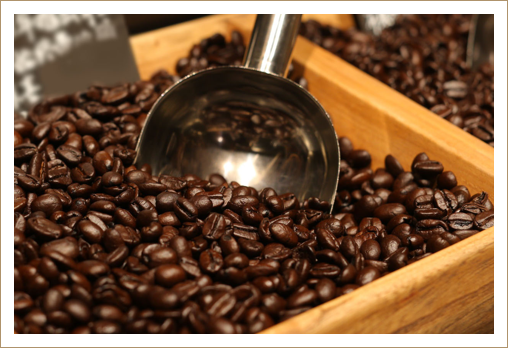World Coffee Map-- A Collection of Information on Coffee producing areas in El Salvador, Central America

For professional baristas, please follow the coffee workshop (Wechat official account cafe_style)
Active volcanic activity brings mineral-rich volcanic ash to the country. In the soil dominated by volcanic ash, there are more minerals and less organic matter. Therefore, in order to maintain the geographical position and make up for the lack of organic matter, farmers in the country will use the pulp residue of treated coffee beans or organic matter under coffee trees as fertilizer to make up for the lack of organic matter in the soil. Make the planting of coffee trees more able to produce coffee beans with harmonious taste. The country's most meaningful initiative is to introduce organic agriculture to the world, cultivating more than 150000 tons of organic coffee every year.
There are six major coffee producing areas in Sakuo, all of which are distributed in the alpine slopes or plateau areas covered with volcanic ash at an altitude of 1200 meters above sea level. November to April of the following year is the coffee harvest and harvest season. As coffee prefers a mild climate, coffee trees are mainly planted in the shade of tall trees (shade grown coffee) in order to avoid excessive temperature and direct sun exposure, affecting the quality of coffee beans. The coffee beans produced by it belong to Arabica species, mainly from Pacas and Bourbon brands, and belong to big beans with sweet taste and excellent flavor.
The mountain area of Apeneca-Ilamatepec is sweet, floral and fragrant in the west. Chocolate, stone fruit, peach, cream flavor, with citrus slightly sour and delicate taste, taste lasting 500-2365
Alotepec-Metapan
In the northern part of the mountain area, the border with Hongguo has an excellent fragrance, floral flavor, which is neutralized by the sweetness of chocolate, citrus and special sour caramel, with a distinct fruit flavor of 1000-2000.
The El Balsamo-Quezaltepec mountain area is located in the southern foothills of the coastal mountains of La Libertad province, about the south of San Salvador and San Vincent. From the Armenia Canyon to the west, to another northwestern province, La Paz, the coffee in this region has an excellent balance, creamy flavor, excellent concentration, vanilla aroma and bright acidity, full of very supple taste 500-1960.
The Chichotepec Volcano district is located in the city of St. Vincent, with fragrant aromas in the central district of sa, floral aromas of oranges and sweetness of chocolate.
The Tecapa-Chinameca mountains are located in the city of San Miguel, the Lempa River and the Grande River, sloping to the north to the central valley area and slowly descending to the south to the very diverse taste of the coastal area. There is an excellent balance of coffee concentration, aroma, acidity and sweetness, with chocolate and ripe fruit flavors, as well as 500-2139 sweetness of cantaloupe, apple and grape.
Cacahuatique
The mountain area is located in the east of downtown Barrios, between the provinces of San Miguel and Moraz á, in the north from the Torola River Valley, that is, the mountains along the Honduran border, to the south in the Torola River Valley, and to the east to the city of San Francisco Gotera with a delicate fruit juice flavor, excellent taste, strong coffee and almond aromas 500-1663
Important Notice :
前街咖啡 FrontStreet Coffee has moved to new addredd:
FrontStreet Coffee Address: 315,Donghua East Road,GuangZhou
Tel:020 38364473
- Prev

World Coffee Map-- A Collection of Information on Coffee producing areas in Central America and Guatemala
For the exchange of professional baristas, please pay attention to the coffee workshop (Wechat official account cafe_style). The latitude of Guatemala is about 15 degrees, because of the long mountains and great regional climate change, which has created the eight coffee producing areas of the country, all located on the highland topography under the subtropical climate, rich and stable rainfall, excellent environment for fertile volcanic ash soil, and the coffee produced by it.
- Next

World Coffee Map-- A Collection of Information on Coffee producing areas in Central America and Panama
Exchange of professional baristas Please pay attention to the coffee workshop (Wechat official account cafe_style) Panama coffee flavor and texture is medium and uniform, quite similar to the Blue Mountain temperament. Panamanian coffee is very smooth, full grains, light weight, and perfect acidity balance, its high-quality coffee beans flavor is pure, very characteristic, it is recommended to adopt moderate roasting. Most of the Panamanian coffee belongs to medium and low prices.
Related
- Detailed explanation of Jadeite planting Land in Panamanian Jadeite Manor introduction to the grading system of Jadeite competitive bidding, Red bid, Green bid and Rose Summer
- Story of Coffee planting in Brenka region of Costa Rica Stonehenge Manor anaerobic heavy honey treatment of flavor mouth
- What's on the barrel of Blue Mountain Coffee beans?
- Can American coffee also pull flowers? How to use hot American style to pull out a good-looking pattern?
- Can you make a cold extract with coffee beans? What is the right proportion for cold-extracted coffee formula?
- Indonesian PWN Gold Mandrine Coffee Origin Features Flavor How to Chong? Mandolin coffee is American.
- A brief introduction to the flavor characteristics of Brazilian yellow bourbon coffee beans
- What is the effect of different water quality on the flavor of cold-extracted coffee? What kind of water is best for brewing coffee?
- Why do you think of Rose Summer whenever you mention Panamanian coffee?
- Introduction to the characteristics of authentic blue mountain coffee bean producing areas? What is the CIB Coffee Authority in Jamaica?

